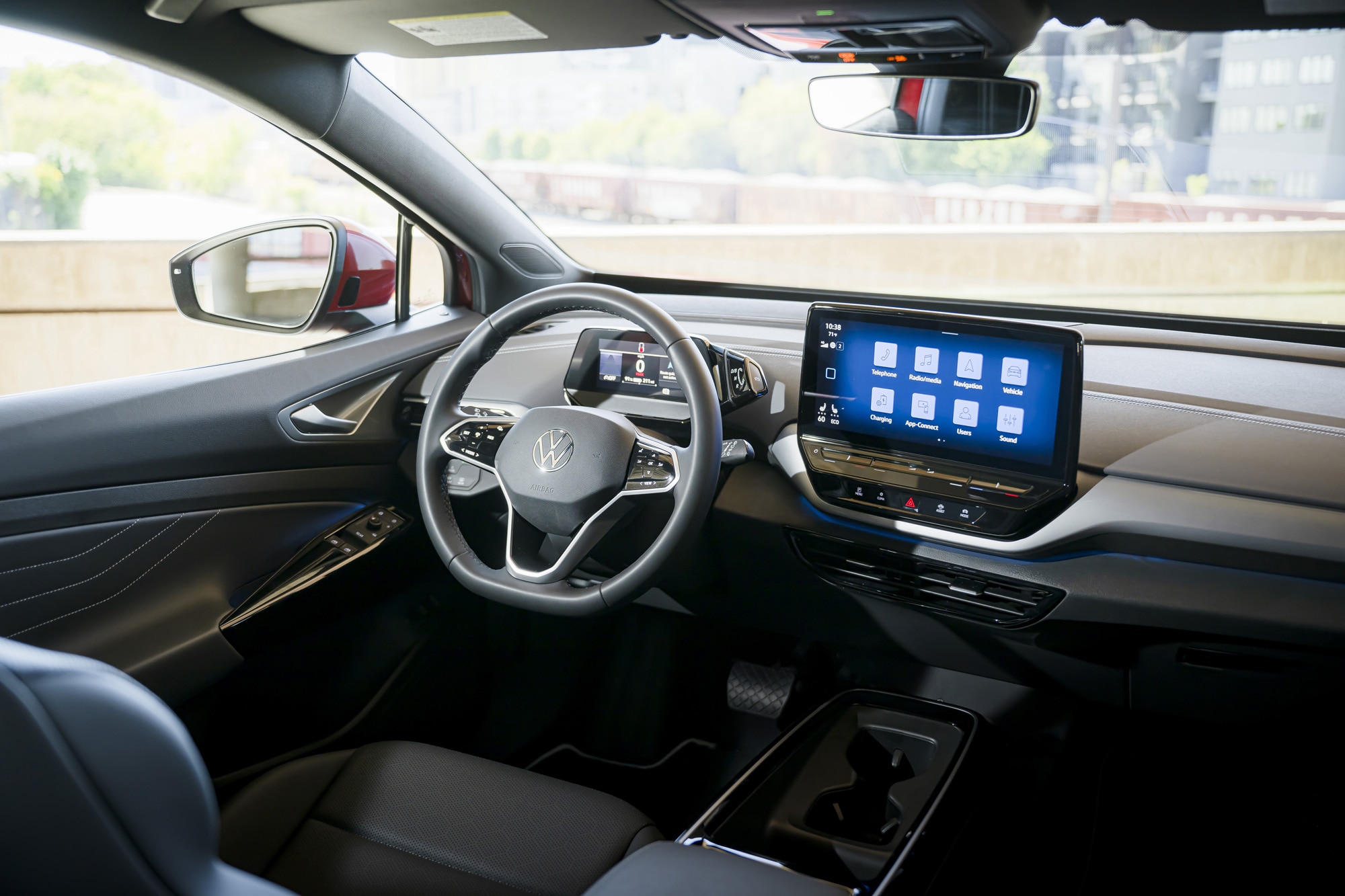Compared: 2023 Kia Niro EV vs. 2023 Volkswagen ID.4
Kia and VW aimed for mass appeal when designing these well-equipped electrics.
 Kia | Volkswagen
Kia | Volkswagen
QuickTakes:
As automakers dive into EVs, they're looking around to see what everyone else is doing and tailoring their entry to match. Case in point: the 2023 Kia Niro EV and the 2023 Volkswagen ID.4. These two compact crossovers cost about the same, offer similar gear, and have more than 200 miles of estimated range. If you're trying to decide between them, it'll likely come down to details.
 Volkswagen
Volkswagen
The Kia Niro EV and Volkswagen ID.4 Go Head to Head in Price
In base form, these small SUVs match each other in power and price — 201 horsepower and about $41,000. While Kia equips every Niro EV with a 65-kWh battery and front-wheel drive, Volkswagen gives ID.4 shoppers a couple of options.
First is a bigger battery, providing 87 kWh of juice versus the base 62 kWh. The cheapest way to get it is with the rear-drive ID.4 Pro, which will set you back about $46,000. The second upgrade is all-wheel drive, made possible by another motor. It is available on models with the big battery and brings the horsepower rating up to 295 and the cost up by about $4,000, regardless of trim level.
 Kia
Kia
It's a Features Party With These Models
Powertrain options aside, the two are similar in their base offerings. Standard to both are rain-sensing wipers, dual-zone automatic climate control, heated front seats, wireless phone charging, blind-spot monitoring, and adaptive cruise control.
Whether you end up with VW's 12.0-inch infotainment system or Kia's 10.3-inch unit, you'll have access to built-in navigation and smartphone-mirroring capability — the latter is wireless only in the ID.4.
The Niro EV has the larger digital instrument cluster, measuring 10.3 inches to the ID.4's 5.3, but then the Volkswagen can park itself, and the Kia can't. Neither lineup offers seats wrapped in leather, but high-trim Niros can cool your butt whereas top ID.4s can massage it.
Even though the ID.4 is half a foot longer than the Niro EV, it offers the same amount of passenger space — 100 cubic-feet — as the Kia. Those extra inches benefit the cargo hold, which can fit 30 cu-ft versus the Niro's 23 cu-ft.
The ID.4 Has Better Range While the Niro EV Has Better Fuel Economy
The Niro EV sees 113 MPGe in combined driving and can go 253 miles between charging sessions. Its VW competitor can't top it in fuel economy but it can in range, with rear-drive, 87-kWh models averaging 107 MPGe and 275 miles per charge.
That MPGe rating holds true for rear-drivers with the 62-kWh battery, but the range estimate dips to 209 miles. Selecting all-wheel drive — available only on big-battery ID.4s — brings the fuel-economy score down to 99 MPGe and puts range at 255 miles.
All vehicle pricing includes MSRP plus destination charges (set at the time of publication), and will be rounded to the nearest thousand.



